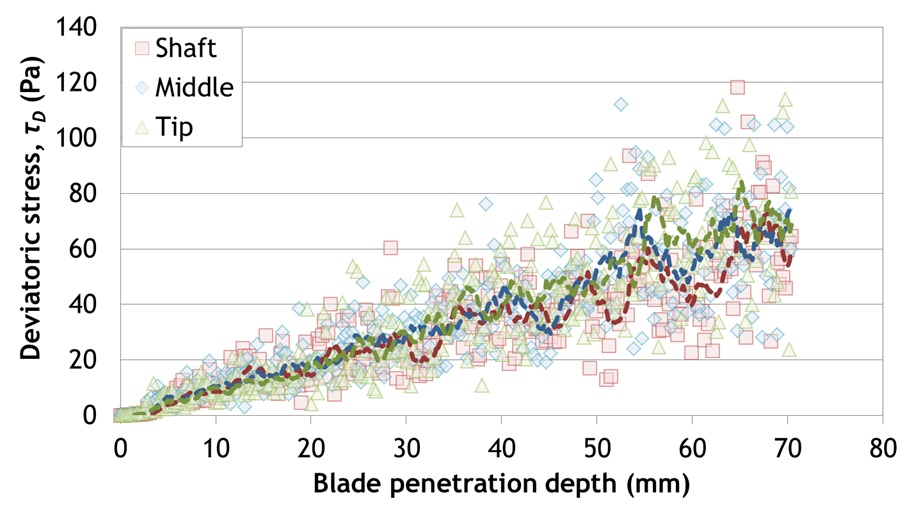Dynamic Stress Analysis of the Freeman FT4 Powder Rheometer
Researchers: Colin Hare, Umair Zafar
Principal Investigator: Mojtaba Ghadiri
Co-Investigator(s): Tim Freeman, Jamie Clayton, Marty Murtagh
Sponsor: Freeman Technology
Status: Ongoing
Abstract
Many powder processing operations are negatively affected by poor powder flowability, which causes reduced performance, product quality and process efficiency. The onset of powder flow, for example in discharge from bins and hoppers, is now relatively well understood, with reliable hopper design being achievable using powder flowability characterisation in a shear cell. However characterisation of dynamic powder flowability remains challenging, and is essential for understanding many process operations, such as tabletting, packing and conveying. The only commercially available powder flowability instrument capable of exposing particles to dynamic conditions is the Freeman FT4 Powder Rheometer. The FT4 drives a rotating impeller downward into a cylindrical powder bed and measures the vertical and rotational work required for the impeller movement. These energies are combined to provide the characteristic flow energy of the powder under these conditions. This device has gained much interest in industry in recent years due to its reliability, reproducibility and correlation with many process flow problems. Despite this, a fundamental understanding of the stress and strain conditions arising in the powder bed is currently lacking from this technique, thus preventing its application to process design.
The current work addresses this challenge by application of the Distinct Element Method (DEM) to the standard FT4 procedure to establish the prevailing stress and strain field in the powder bed. In parallel to this the flow energy of glass beads is experimentally assessed using the FT4. The glass beads are made cohesive by the process of silanisation. The cohesive nature of the beads is replicated in the DEM using the linear elastic, plastic and adhesive model of Pasha et al. (2014). The stresses are analysed within cubic measurement cells immediately in front of the impeller, shown in Figure 1. The prevailing shear stresses are shown in Figure 2. The shear stresses increases as the blade descends into the bed, whilst the stresses across the length of the blade remain almost constant at a given height of the blade. This suggests that the device is indeed capable of providing a fundamental understanding of powder flowablity under dynamic conditions.
Future work will investigate the full range of strain rates achievable with the FT4, the variation of shear stress with strain rate and the correlation between prevailing shear stress and flow energy.
Figure 1. Stress measurement cells in DEM

Figure 2. Prevailing shear stresses in the simulated bed
Publications
Hare, C., Zafar, U., Ghadiri, M., Freeman, T., Clayton, J., Murtagh, M., 2015 "Analysis of the dynamics of the FT4 powder rheometer", Powder Technology, doi:10.1016/j.powtec.2015.04.039.
